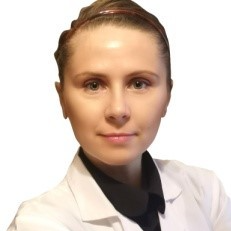Advanced Materials for Remediation of Environmental Pollutants
A special issue of Materials (ISSN 1996-1944). This special issue belongs to the section "Smart Materials".
Deadline for manuscript submissions: closed (20 June 2023) | Viewed by 6898
Special Issue Editors
Interests: photoacoustic spectroscopy sensing; laser photoacoustic spectroscopy device development gases analysis; biomarkers; oxidative stress; laser–soft tissue interaction; numerical simulation of temperature distribution in tissue
Special Issues, Collections and Topics in MDPI journals
Interests: laser physics and applications; photoacoustic spectroscopy sensing; optical spectroscopy; laser photoacoustic spectroscopy device development; oxidative stress and biomarkers; analysis of gases
Special Issues, Collections and Topics in MDPI journals
Interests: biophotonics; technology of lasers; photoacoustic spectroscopy; laser–matter interactions; medical applications of lasers; applications of CO2 lasers in life sciences and environment
Special Issues, Collections and Topics in MDPI journals
Special Issue Information
Dear Colleagues,
Today, the global environment is continuously dealing with an increasing amount of pollutants, including inorganic and organic compounds, micro- and nanoplastics, oils, heavy metals, paints, and surfactants, which enhance global warming. Due to their increasing presence, many fields of science are developing methods to mitigate the effects caused by these pollutants, as well as methods to improve their detection. Advanced materials can help to ensure a clean environment in a sustainable and friendly way. As such, nanomaterials have proven to be an interesting approach in treating pollutants. Organic pollutants are also a major factor in the current problem of environmental pollution, and research has found that certain materials can be created that enhance and catalyze photodegradation of organic pollutants. Polymers are of great interest in oil spill remediation, and as well as these nanowire membranes have been created that selectively bind with oils up to 20 times the weight ratio of water and can be resuspended in solution and be used again for multiple cycles. Sensing of pollutants has become important in developing ways to deal with them and supramolecular molecules have been developed which selectively bind to the specific pollutant of interest which can then be detected.
Environmental pollutants represent an important factor in the development of new materials, for finding innovative synthesis and technological solutions, as well as understanding the relationships of functional properties, which may all be reflected in your scientific contributions to this Special Issue. The forthcoming Special Issue of Materials, "Advanced Materials for Remediation of Environmental Pollutants", aims to follow the new advances in this field of research. It is our pleasure to invite you to contribute your research article, communication or review for this Special Issue.
Dr. Mioara Petrus
Dr. Cristina Achim
Dr. Ana Bratu
Guest Editors
Manuscript Submission Information
Manuscripts should be submitted online at www.mdpi.com by registering and logging in to this website. Once you are registered, click here to go to the submission form. Manuscripts can be submitted until the deadline. All submissions that pass pre-check are peer-reviewed. Accepted papers will be published continuously in the journal (as soon as accepted) and will be listed together on the special issue website. Research articles, review articles as well as short communications are invited. For planned papers, a title and short abstract (about 100 words) can be sent to the Editorial Office for announcement on this website.
Submitted manuscripts should not have been published previously, nor be under consideration for publication elsewhere (except conference proceedings papers). All manuscripts are thoroughly refereed through a single-blind peer-review process. A guide for authors and other relevant information for submission of manuscripts is available on the Instructions for Authors page. Materials is an international peer-reviewed open access semimonthly journal published by MDPI.
Please visit the Instructions for Authors page before submitting a manuscript. The Article Processing Charge (APC) for publication in this open access journal is 2600 CHF (Swiss Francs). Submitted papers should be well formatted and use good English. Authors may use MDPI's English editing service prior to publication or during author revisions.
Keywords
- pollutants
- degradation
- photocatalysis
- nanotechnology
- numerical simulation
- sensors








